I headed off from my house one Saturday early in my biking career, drooling with excitement for the mountain bike ride I’d been awaiting all week. Then, before I had reached the trailhead, I noticed my rear tire was significantly low. I felt like I was riding through mud – on the pavement! Remembering a gas station with an air pump on my way to the trailhead, I figured I could easily pump up my tire without a wasted trip back to my house.
But, when I tried to inflate my mountain bike tire… AAACK! Foiled! The gas station had a standard car pump and, new biker that I was, I forgot my bike tires have a presta valve. A week of hungering for a mountain bike ride… RUINED! All because of a puny little valve. Oh, the angst. Do NOT let this happen to YOU!
Unless you grew up biking, most of us are so familiar with car tire valves, we assume it’s the only type of valve. In truth, car tires use what’s called a Schrader valve. It’s about the diameter of a pencil and has a tiny “button” in the center that, when pressed, allows air in or out, but holds air pressure relatively steady when not compressed.
Presta valves, on the other hand, are significantly skinnier than Schrader valves. They don’t have a button in the center of the valve and instead have an attached screw mechanism at the tip. When screwed closed, it holds air pressure in the tire. When unscrewed, you can pump air in or release air out.
Presta ValveCurrently, presta valves are the most common type of valve on high-end mountain bikes. Racers and high performance cyclists prefer them. They’re becoming increasingly common – even on mountain bikes on the low-end of the price spectrum.
Why, you ask. (Perhaps with a significant number of swear words as you kick your flat mountain bike tire or throw your useless Schrader pump.) Why use an uncommon, obscure valve that doesn’t fit a standard pump? Is it just to make mountain bike newbies suffer? Why? Why?
No, it’s not just to frustrate you.
Presta valves are generally more reliable and allow pumping your tires to a more precise pressure. By virtue of design, all Schrader valves release tiny amounts of air over time, requiring occasional “topping off”. Having a cap on the valve can significantly decrease the air loss, but it still means, at any given moment, your tire may not have the pressure you pumped it to.
A casual mountain bike rider may not know what pressure they should be riding or even notice when the pressure is off. But for high-speed riders, tire pressure can have a significant impact on speed, race performance and riding safety.
The screw on the tip of the presta valve allows a rider to close off the tube at the desired pressure and not require a cap. Barring an unnoticed leak or a puncture during a ride, the tire will now reliably hold the pressure you want.
You can inflate a presta valve with a common air pump, such as at a gas station or portable air compressor. However, you need an adaptor that’s ridiculously small in size but huge in importance: a presta valve adaptor.
However, you need an adaptor that’s ridiculously small in size but huge in importance: a presta valve adaptor.
Here are the steps to inflate a presta valve with a standard pump:
Since more and more mountain bike tires use presta valves, most bike pumps are either universal (meaning one hole works on both presta and Schrader valves) or they have two separate holes, one for each valve type. However, you should always carry a valve adaptor when you ride for situations when a standard pump is the only option. Some cyclists do this by keeping a valve adaptor screwed on their tire valve all the time. Just make sure the valve is screwed closed before putting the adapter on!
Presta valve adapters are extremely tiny and portable. This also means they’re easy to lose. The good news is they’re fairly cheap. I usually buy a handful at a time and keep one in my garage bike tools and one in my portable tool kit for rides. Having one in your glove box isn’t a bad idea, either!
This also means they’re easy to lose. The good news is they’re fairly cheap. I usually buy a handful at a time and keep one in my garage bike tools and one in my portable tool kit for rides. Having one in your glove box isn’t a bad idea, either!
All bike shops sell valve adapters and some general sporting goods shops and hardware stores carry them as well. You can also buy valve adapters online easily and cheaply.
This simple question actually does not have a straightforward answer. The simple rule is to refer to the tire manufacturer’s specs on tire pressure that are printed on the sidewall of your tires. Consensus of riders is that mountain bike pressure should be 30 psi on the front tire and 33 psi for the rear tire. This information should serve you well if you have only a casual interest in mountain biking and are doing entry-level to intermediate trails two or three times a month.
However, if you spend a significant amount of time on your bike (and an equally significant amount of time dealing with pinch flats, blowouts or skidding out on corners), you’ll want to dive deeper into the science of bike tire pressure. DIY Mountain Bike has a fabulous, in-depth article and survey results examining appropriate bike tire pressure.
DIY Mountain Bike has a fabulous, in-depth article and survey results examining appropriate bike tire pressure.
The fastest and easiest (and cheapest) way to check your tire is with your hand. When you squeeze it, it should be hard in the center with only a tiny bit of give farther out on the tire near the treads. A hand test, however, is – not surprisingly – not very accurate!
If you want to be precise, a tire pressure gauge will be necessary. But be warned: tire pressure gauges are notoriously unreliable and the sensitive sensors are easily broken. For my recommendation, read my tire pressure gauge product review.
If you’re in a pinch (perhaps literally!), and you don’t have a universal pump or a valve adapter, you can modify a tube cap to create a functional adapter using a presta valve CAP.
 Find the place on the valve cap where it gets smaller. Cut at that spot with scissors or whatever you have that will do the trick. Throw the tiny tip away.
Find the place on the valve cap where it gets smaller. Cut at that spot with scissors or whatever you have that will do the trick. Throw the tiny tip away.Remember to screw the tire valve shut after inflating! I know you’re tired of hearing that, but it’s important.
Now that you know everything you need to about how to inflate a presta mountain bike tire, you’ll never find yourself hungering for a ride and find yourself deterred by a standard tire pump!
And don’t forget to screw the presta valve closed…
Professional writer Kat Jahnigen was 2 miles from the nearest village – and roughly 2,310 miles – from the nearest English-speaking town – when her bike tire burst. At that time, she was a college student on a bike trip across the desolate, rocky island of Crete. It suddenly occurred to her that it would’ve been good to learn some basic bike repairs before setting off on a solo bike trip.
Check out Kat’s website WriteHire at writehire.net.
Learn how to inflate presta valves in just a few simple steps.
Image Credit: Kelly-anne Leyman/Hemera/Getty Images
You'd think inflating a bike tire would be pretty simple. That is, until you take a look at your bike's valve. Enter, intimidation.
The most common type of bike valve is called a Presta, and it's a long, cylindrical piece of metal that sticks out from the bike's tire. It has a small tip at the end.
Fortunately, you can pump up a Presta in just a few simple steps, according to cycling coach Garret Seacat, CSCS. All you need to fill your tire is a compatible bike pump (more on that below).
Check out this video and step-by-step instructions to learn how to inflate a Presta valve. Then get ready to ride your bicycle flat-tire-free.
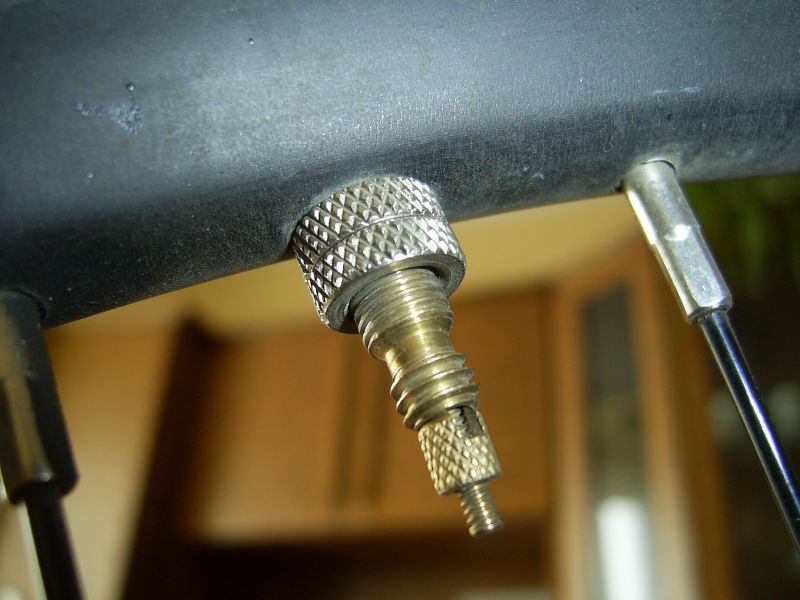 Find and Unscrew the Valve Cap
Find and Unscrew the Valve CapThe valve should be on the inside of your tire. Unscrew the small point (aka nut or cap) near the top of the valve. It will turn in a circle and move upward until it's at the top of the thread. Don't force it past this point, recommends Seacat.
Once the cap is in the top position, press the valve. If you feel a little air coming out, you're ready to go.
Connect the pump head to the top of the valve and lock it in place. (Some pumps require pulling a lever while others involve pressing a button at the end of the hose, he says.)
Start the flow of air, monitoring the tire pressure as it inflates. Continue pumping to the pressure measurement or PSI listed on the tires, Seacat says.
Unlock the head of the pump and remove it from the valve. (Reverse the motion you used to attach the pump.)
Make sure to screw the nut of the valve back into place, Seacat says.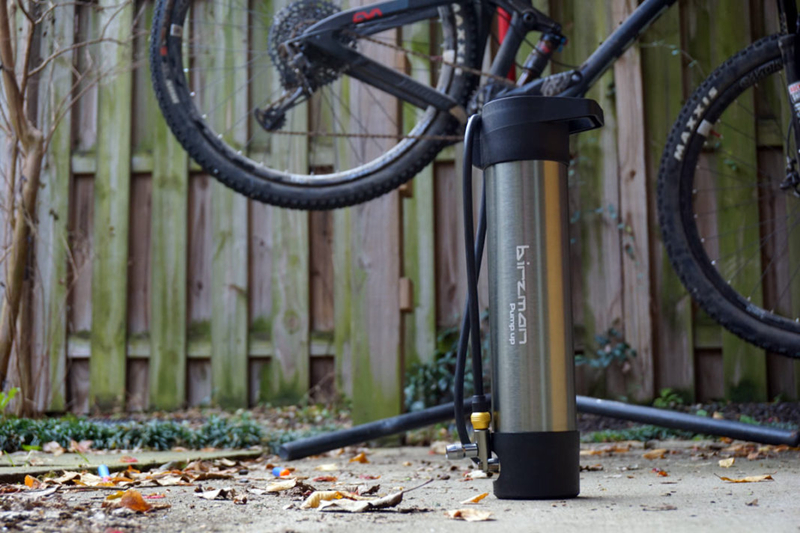 Tap the top of the valve. If no air comes out, your job is done.
Tap the top of the valve. If no air comes out, your job is done.
Misplaced your cap or need a new one? You can buy a replacement to keep your tires inflated and valve damage-free
While most bike pumps are compatible with Presta valves, some aren't. Scraders are another common type of pump and fit with (you guessed it) Schrader valves. (You can check your bike pump's manual or online product description to figure out which kind of pump it is.)
Fortunately, if you have a Schrader pump, you can still use it to inflate a Presta valve — you just need an adapter. These are super easy to install (generally all you do is screw them onto the valve) and inexpensive to buy online.
The Best Presta Valve Adaptors
 com, $5.99 for 5)
com, $5.99 for 5)Related Reading
Contents
Flat tires do not bode well for the cyclist. The situation must be resolved immediately, otherwise you will have to become a pedestrian for a while. What should be done? That's right, pump up the camera and calmly continue moving. Consider how to pump up a bicycle wheel with a pump, what subtleties are available when using an autocompressor, and whether it is possible to do without a pump.
Tire pressure is the main parameter that is responsible for the speed of movement, grip and safety of the cyclist. The average minimum indicator for bicycles is 2 atmospheres. For driving on asphalt, the recommended value is within 3.5 atm., For primers - 2.6 - 2.8 atm.
The average minimum indicator for bicycles is 2 atmospheres. For driving on asphalt, the recommended value is within 3.5 atm., For primers - 2.6 - 2.8 atm.
It is easy and simple to determine the pressure inside the bicycle tube using a pressure gauge - separate or built into the pump:
Another method: feel around the entire circumference of the tire with your fingers. If the rubber does not flex, then you can ride. It should be noted that this method will only give accurate results for thin slicks on road bikes and tires on city bikes.
Consequences of underinflated tyres:
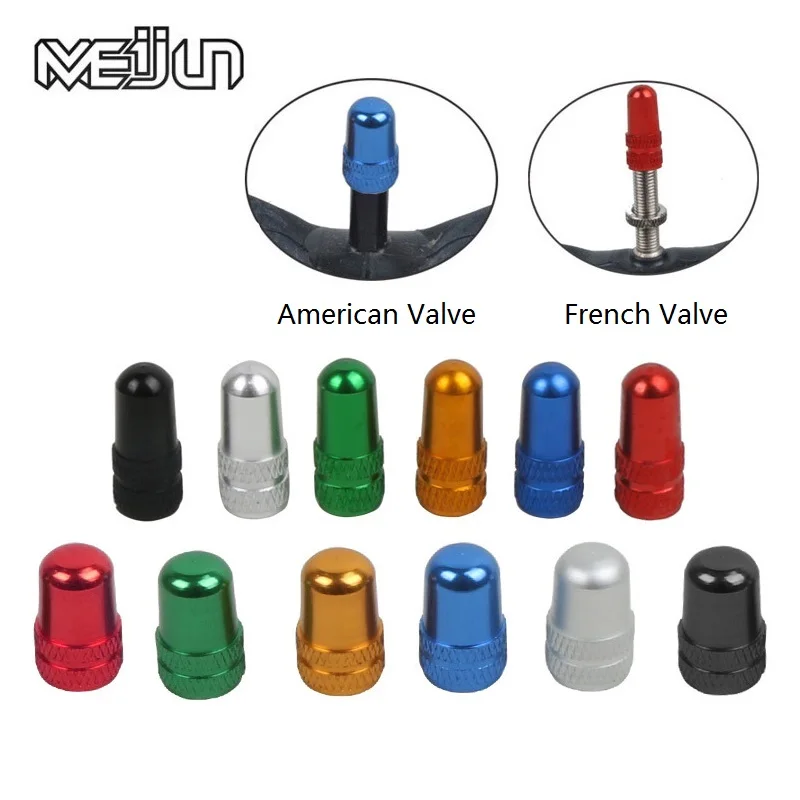
On the contrary, an excess amount of air in the chambers threatens the following:
Maintaining the recommended pressure will eliminate all these shortcomings and allow you to get the most out of your trips. Below is a table of values depending on the weight of the cyclist:
| The mass of the cyclist, kg | atmospheres/PSI* |
| 50 | - 2.59/35 - 38 |
| 3.1/45.5 | |
| 90 | 3.6/53 |
| 105 | 3. 9/57.5 9/57.5 |
| 4.1/60 | |
| 118 | 3.2 - 3.4/47 - 50 |
*1 atm = 14.696 Psi
In general, a bicycle pump is a necessary thing for every cyclist. With the help of this simple device, it will be possible to inflate the wheels on your own, and not roll your bike to a service or gas station.
Hand pumps are divided into two types: simple and with a recording device (pressure gauge). It is recommended to purchase the second option, however, if a separate pressure gauge was lying around in the cabinet, you can buy a cheaper pump.
Universal hand pump with dial gauge
For ease of pumping with a conventional hand pump, you can immediately count the number of air inlets until the optimum pressure is reached and then pump exactly like this, even without additional use of a pressure gauge..thumb.jpg.c246dc5125edce7368c2457f427d5caa.jpg)
How to inflate the chambers correctly:
Pressure tracking:
By the way, the latter will not be superfluous to do with a pressure gauge, since the pressure inside the pump can increase during pumping, but air does not enter the chamber (the valve is not completely closed) or exit through a hole in it.
Common nipples for bicycles are automotive and Dunlop. For thin wheels, a Presta nipple with a valve is used. It requires cleanliness and accuracy in handling.
It requires cleanliness and accuracy in handling.
Presta tubes fitted to road bikes and select hybrids
A special small volume pump is matched to it. A regular bike pump may not fit or you may need to use an adapter.
Most bicycles have a "Schrader" or car valve. The standard option allows you to inflate tires at gas stations and public bike pumps (of which there are only a few in our cities so far) directly.
How to inflate simple wheels with a car pump:
How to inflate your Presta with a compressor at a gas station:
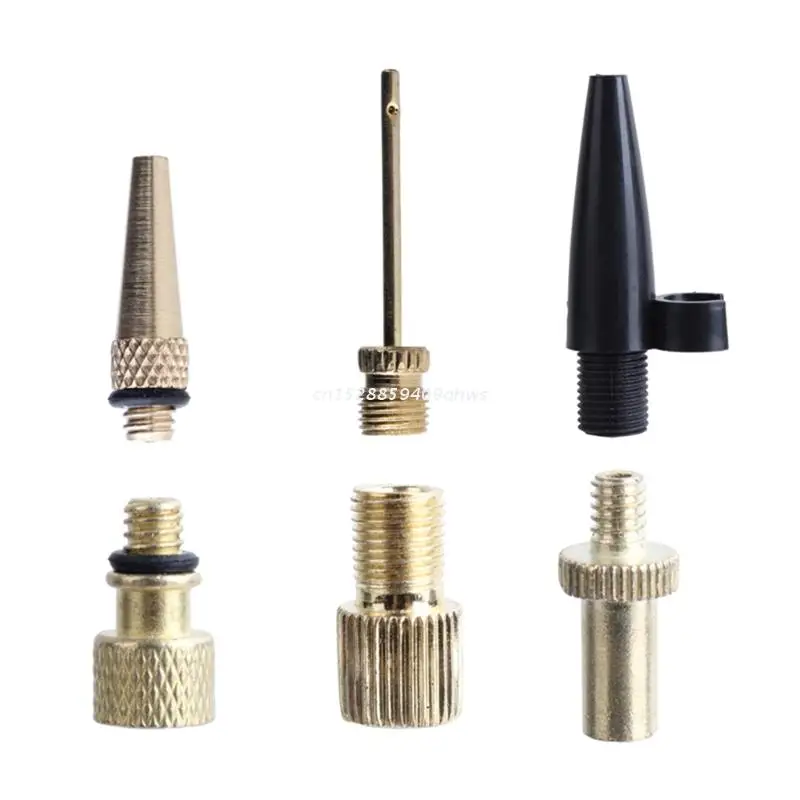
In this case, it is very important to know exactly how many atmospheres it is necessary to let air into the chambers. With increasing pressure, it can quickly burst.
The last option left is Dunlop. It is identical in size to an automobile nipple, but in terms of design features it is similar to the French one (aka Presta). When inflating a wheel, you should follow the rules for a sports analogue.
Is it possible to inflate bicycle inner tubes without a pump? It is unlikely to reach the recommended pressure, since a regular supply of pressurized air is required, but you can reach the minimum values. Let's consider several methods of pumping chambers, which can be resorted to without using a pump:
Vacuum cleaner. Many models are equipped with a blower mode, when switched to which air is blown out. A thin hose can be used to connect the wheel nipple. The result directly depends on the tightness of the connection between the hose and the nipple. Here you can use rubber pads, clamps and even rags.
Many models are equipped with a blower mode, when switched to which air is blown out. A thin hose can be used to connect the wheel nipple. The result directly depends on the tightness of the connection between the hose and the nipple. Here you can use rubber pads, clamps and even rags.
Bottle pump. You will need two plastic bottles. One of them will serve as a cylinder, the other as a rod. Cut off the bottom of the first bottle and connect its neck through a thin hose to the chamber outlet. Next, insert the second bottle into it and with translational movements pump air through the cylinder into the hose. For tightness, grease the connection of the neck and the hose with sealant or lay a rubber pad. High pressure cannot be created, but it is possible to ride the N-th distance on a bicycle.
Bottle pump schematic: 1 - "rod", 2 - cylinder, 3 - cylinder neck, 4 - hose
The third way is to remove the nipple and inflate like a balloon.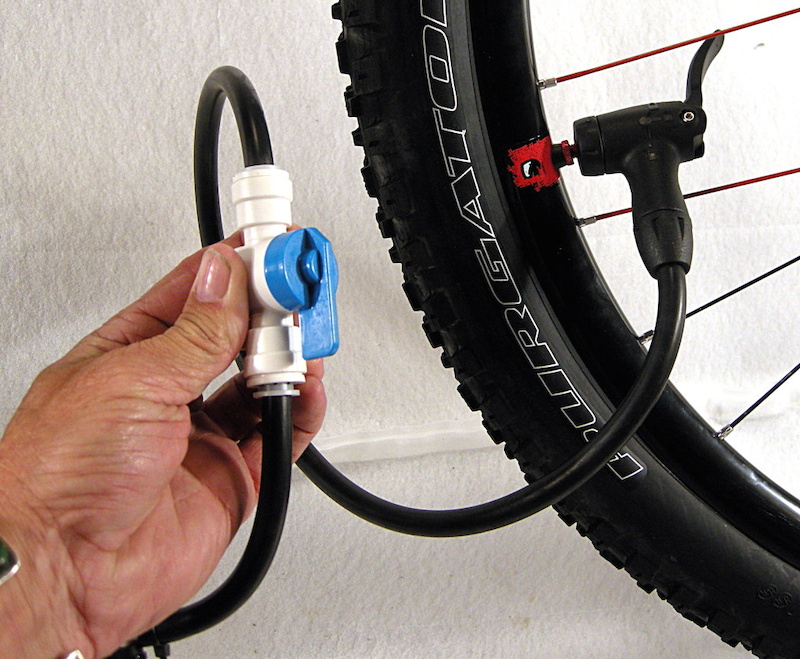 The method is fraught with difficulties in its removal and installation in its rightful place. It will be especially difficult to install back, since during this time all the air can be released.
The method is fraught with difficulties in its removal and installation in its rightful place. It will be especially difficult to install back, since during this time all the air can be released.
An alternative tire inflation option is to inflate with a bicycle air fork pump. You will have to work hard, as this pump is designed for small volumes.
Despite the fact that a resourceful person will find a way out of any situation, it is recommended to have a special pump for tire inflation. Moderately inflated bicycle chambers are the key to comfortable trips without unpleasant surprises in the form of a burst chamber or damage to the wheels.
The expression "reinventing the wheel" has a negative connotation in Russian and means doing unnecessary work that complicates life. A modern bike is a complex high-tech product, its design contains many details that do honor to human imagination and engineering talent. The bicycle nipple is the device that started part of the automotive history. The first vehicle on rubber wheels was the bicycle.
The bicycle nipple is the device that started part of the automotive history. The first vehicle on rubber wheels was the bicycle.
In 1887, veterinarian John Boyd Dunlop, a Scotsman living in Ireland, watched his little son ride a tricycle with metal wheels on a cobblestone pavement in 1887. He came up with the idea to reduce the merciless shaking that he experienced by adapting an elastic tube filled with air to the wheels. The first version of the wheel with a tire was wooden, with the gut glued to the disk (either cow or pork - his profession affected). In the future, the option of a rubber tube turned out to be more successful.
To inflate a pneumatic tire, he invented a special adapter with a thin rubber tube that kept the air in the tire, acting as a check or one-way valve. The design of this temporary connection to the pump was broadly applied to the production of bicycle tires, which was taken up by a small factory organized by an inventive veterinarian with his brother. Dunlop's bicycle nipple, along with the idea of rubber tires, was also used by automakers, making his name famous among motorists as well.
Dunlop's bicycle nipple, along with the idea of rubber tires, was also used by automakers, making his name famous among motorists as well.
The word "nipple" is derived from the English nipple (nipple) and refers to a special kind of tube, usually fitted with a valve, to be connected to a pipeline, or - in the case of a bicycle or car wheel - with a rubber tube or tire. In English, this design detail is now called valve - valve. A bicycle nipple is also a special nut that secures the spoke and wheel rim.
The Dunlop valve, sometimes referred to as the English or Woods valve after the inventor of the improvement, is a design that has been used on bicycles for a very long time, especially on everyday and lower price bikes. Today, tires with such a valve are a rarity. More modern models have long been equipped with an automotive valve bearing the name of its inventor, August Schroeder. Later, a special bicycle nipple appeared for racing and road cars, lighter than the car, called the Presta valve.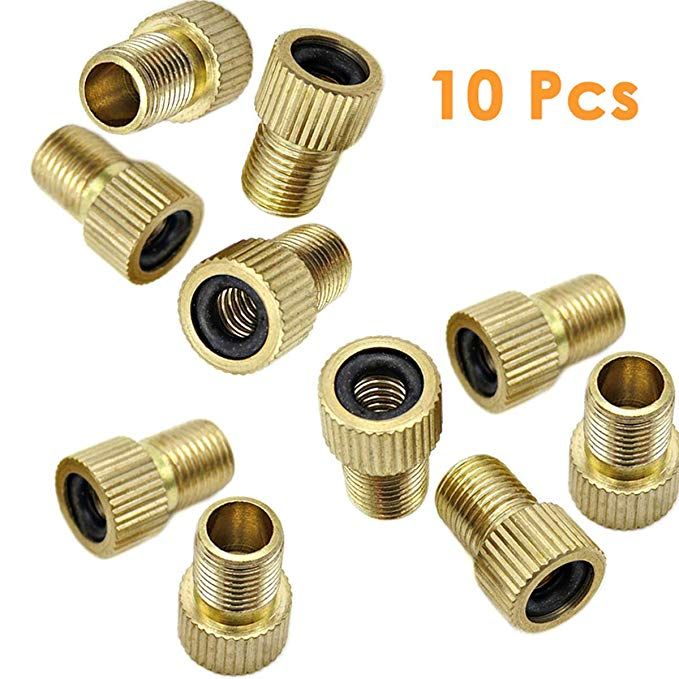
The inlet in the rim, where this obsolete valve is glued into the chamber, is 8 mm in diameter. By design, it is a metal tube with an external thread and a diameter slightly smaller than the hole in the rim, into which a thinner metal fitting is inserted - a spool with two holes. Above is the inlet through which air enters from the pump. It is protected from dirt by a special cap on the thread. Another hole in the fitting, the outlet, is located on the side and is closed with a segment of a thin rubber tube - the nipple itself, which plays the role of a one-way valve. The fitting is fixed on the inlet tube with a round nut.
In order to inflate such a tire, you need an adapter for a bicycle nipple with an outlet diameter of 3 mm, or a standard retro hose that is screwed onto the spool. A modern pump with an adapter for a Presta nipple is also suitable.
This invention of the American August Schroeder (there are reading options: Schrader or Schrader) was patented in 1893 in the USA.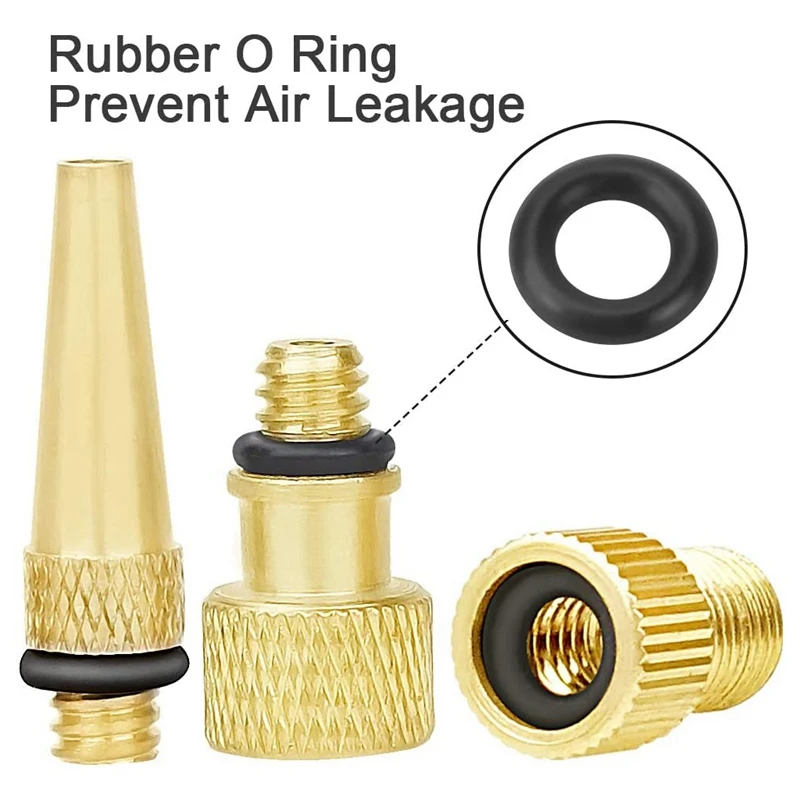 Therefore, this valve is otherwise called American, but more often it is simply called an automobile valve - the vast majority of wheels of modern cars and motorcycles are equipped with such a device.
Therefore, this valve is otherwise called American, but more often it is simply called an automobile valve - the vast majority of wheels of modern cars and motorcycles are equipped with such a device.
It is also used in many refrigeration and air-conditioning applications where additional refrigerant charge is required and in other systems as an air or process fluid pressure relief unit.
The design of the Schrader nipple consists of a tube into which the working unit is screwed - the core, which is a poppet valve that closes the air outlet from the chamber under the influence of a spring. By adjusting the height of the protruding spool rod, you can control the air pressure in the chamber. The spool is screwed in with a special tool, which is often used as a protective cap - a metal cap with a plastic seal inside. A new word in such a system is built-in pressure control sensors.
This pneumatic device is sometimes called French. Tires with Presta valves are more commonly used on narrower rim wheels used on racing, road or hybrid bikes. The diameter of the hole in the rim of this type of wheel is 6 mm, which avoids a critical weakening of strength. Therefore, it is not necessary to adapt chambers with an automobile valve for sports bicycle wheels. This is technically possible, but will require an increase in the hole to 8 mm.
The diameter of the hole in the rim of this type of wheel is 6 mm, which avoids a critical weakening of strength. Therefore, it is not necessary to adapt chambers with an automobile valve for sports bicycle wheels. This is technically possible, but will require an increase in the hole to 8 mm.
The Presta type bicycle nipple device differs from the American Schrader valve by the presence of a lock nut that fixes the spool and the absence of a spring that closes the valve. In order to bleed air, you need to unscrew the protective cap and simply press on the top of the valve - there is no need to unscrew the middle working body, like with a car nipple. The valve is closed by air pressure from the tire. This makes it easier to fill the chamber with air, even with a small displacement hand pump.
How to inflate a bicycle valve with a hand pump? The main thing is to decide on the type of connection. Most modern hand or foot pumps are equipped with heads designed for two main types - American and French, Schreder or Presta. Most often, you just need to turn the head to the desired position, open the locking lever if necessary, slide the adapter onto the nipple and lower the lever, fixing the pump on the wheel.
Most often, you just need to turn the head to the desired position, open the locking lever if necessary, slide the adapter onto the nipple and lower the lever, fixing the pump on the wheel.
It is important not to lose the protective cap of the valve, which protects the working body of the connector from dirt and dust. Particularly susceptible to contamination is the Presta valve, which can easily fail due to the smaller diameter of the air passage and the lack of a spring.
Is it possible to use a compressor instead of a hand pump for two-wheeled vehicles? How to inflate a bicycle nipple with a car pump? In the case of the Schrader valve, this is very simple: all structural components and adapters are unified and fit any vehicle, regardless of the number of wheels. For nipples of other varieties, adapters of the right size will be required.
In countries where the development of cycling is of great importance - in Germany, Holland, Scandinavia - public points for inflating bicycle wheels are provided, equipped with compressors of less power than car compressors.